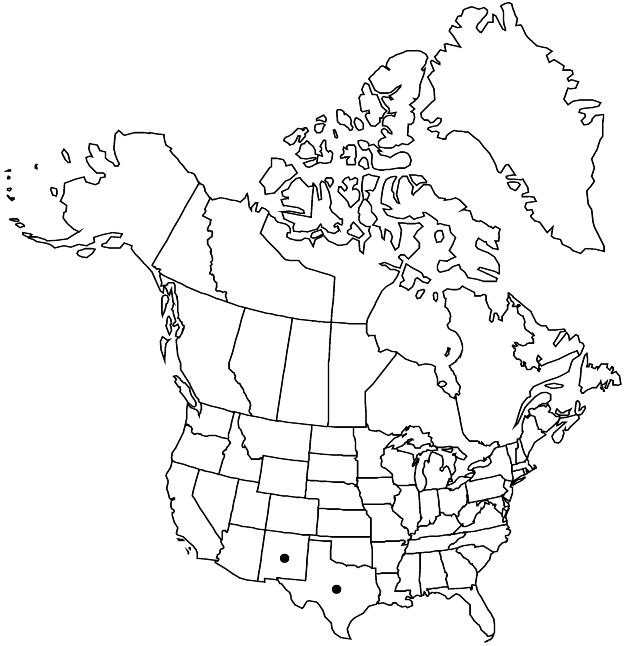Difference between revisions of "Philadelphus mearnsii"
in N. L. Britton et al., N. Amer. Fl. 22: 174. 1905.
FNA>Volume Importer |
imported>Volume Importer |
||
| (6 intermediate revisions by 2 users not shown) | |||
| Line 1: | Line 1: | ||
{{Treatment/ID | {{Treatment/ID | ||
|accepted_name=Philadelphus mearnsii | |accepted_name=Philadelphus mearnsii | ||
| − | |accepted_authority=W. H. Evans ex Rydberg | + | |accepted_authority=W. H. Evans ex Rydberg |
|publications={{Treatment/Publication | |publications={{Treatment/Publication | ||
| − | |title=N. Amer. Fl. | + | |title=in N. L. Britton et al., N. Amer. Fl. |
|place=22: 174. 1905 | |place=22: 174. 1905 | ||
|year=1905 | |year=1905 | ||
| Line 12: | Line 12: | ||
|name=Philadelphus hitchcockianus | |name=Philadelphus hitchcockianus | ||
|authority=S. Y. Hu | |authority=S. Y. Hu | ||
| − | }}{{Treatment/ID/Synonym | + | |rank=species |
| + | }} {{Treatment/ID/Synonym | ||
|name=P. mearnsii subsp. bifidus | |name=P. mearnsii subsp. bifidus | ||
|authority=C. L. Hitchcock | |authority=C. L. Hitchcock | ||
| + | |rank=subspecies | ||
}} | }} | ||
|hierarchy=Hydrangeaceae;Philadelphus;Philadelphus mearnsii | |hierarchy=Hydrangeaceae;Philadelphus;Philadelphus mearnsii | ||
| Line 30: | Line 32: | ||
|elevation=1300–1800(–2200) m. | |elevation=1300–1800(–2200) m. | ||
|distribution=N.Mex.;Tex.;Mexico (Coahuila). | |distribution=N.Mex.;Tex.;Mexico (Coahuila). | ||
| − | |discussion=<p>Philadelphus hitchcockianus, with its hypanthium and abaxial sepal surfaces glabrous, is here synonymized with P. mearnsii, which has its hypanthium and abaxial sepal surfaces moderately sericeous-strigose; substantial variation in this character is found in several populations. Hu S. Y. (1954–1956) alleged that P. hitchcockianus and P. mearnsii also differ in fruit size; however, that character is variable and overlapping.</p> | + | |discussion=<p><i>Philadelphus</i> hitchcockianus, with its hypanthium and abaxial sepal surfaces glabrous, is here synonymized with <i>P. mearnsii</i>, which has its hypanthium and abaxial sepal surfaces moderately sericeous-strigose; substantial variation in this character is found in several populations. Hu S. Y. (1954–1956) alleged that P. hitchcockianus and <i>P. mearnsii</i> also differ in fruit size; however, that character is variable and overlapping.</p> |
|tables= | |tables= | ||
|references= | |references= | ||
| Line 39: | Line 41: | ||
-->{{#Taxon: | -->{{#Taxon: | ||
name=Philadelphus mearnsii | name=Philadelphus mearnsii | ||
| − | + | |authority=W. H. Evans ex Rydberg | |
| − | |authority=W. H. Evans ex Rydberg | ||
|rank=species | |rank=species | ||
|parent rank=genus | |parent rank=genus | ||
| Line 51: | Line 52: | ||
|distribution=N.Mex.;Tex.;Mexico (Coahuila). | |distribution=N.Mex.;Tex.;Mexico (Coahuila). | ||
|reference=None | |reference=None | ||
| − | |publication title=N. Amer. Fl. | + | |publication title=in N. L. Britton et al., N. Amer. Fl. |
|publication year=1905 | |publication year=1905 | ||
|special status= | |special status= | ||
| − | |source xml=https:// | + | |source xml=https://bitbucket.org/aafc-mbb/fna-data-curation/src/2e0870ddd59836b60bcf96646a41e87ea5a5943a/coarse_grained_fna_xml/V12/V12_524.xml |
|genus=Philadelphus | |genus=Philadelphus | ||
|species=Philadelphus mearnsii | |species=Philadelphus mearnsii | ||
Latest revision as of 19:16, 5 November 2020
Shrubs, 5–15(–40) dm. Stems tan-brown, weathering gray, striate, stiffly divaricately branched, strigose-sericeous; internodes 0.1–3.5 cm; short shoots often present; axillary buds exposed. Leaves: petiole 0.5–4 mm; blade green or gray-green abaxially and adaxially, oblong-lanceolate, linear-lanceolate, or elliptic to ovate, 0.5–1.7(–3) × 0.1–0.6(–1.1) cm, coriaceous, margins entire, ± revolute, surfaces ± equally moderately strigose, hairs appressed, coarse, 0.2–0.6(–0.9) mm, without understory of coiled-crisped hairs; veins inconspicuous. Inflorescences: flowers solitary, produced from previous year's long shoots, often appearing axillary. Pedicels 0.5–2 mm. Flowers: hypanthium sparsely to moderately strigose-sericeous or glabrous; sepals ovate-lanceolate, 2–3.5(–4.2) × 1.3–2.3 mm, apex acute to acuminate-caudate, abaxial surface sparsely to moderately strigose-sericeous or glabrous, adaxial surface glabrous except villous along distal margins; petals white, oblong-lanceolate to broadly oblong-ovate, (5–)7–8.5(–10) × 2.5–4.5(–5.8) mm; stamens 13–18(–24); filaments distinct, 1.3–4 mm; style 1, clavate, 2–3.2 mm, narrow base 0.5–1.5 mm; stigmatic portion 1.3–2 mm, distally lobed to 0.5 mm. Capsules ovoid-turbinate, 3–5.5 × 3.2–5.5 mm, sepals ± persistent at distal 1/3 or more distally, capsule distal surface impressed in 4(–8) radial lines. Seeds not caudate, 1–1.2 mm.
Phenology: Flowering Apr–Jun; fruiting May–Nov.
Habitat: Limestone mountains, oak-pinyon zones.
Elevation: 1300–1800(–2200) m.
Distribution

N.Mex., Tex., Mexico (Coahuila).
Discussion
Philadelphus hitchcockianus, with its hypanthium and abaxial sepal surfaces glabrous, is here synonymized with P. mearnsii, which has its hypanthium and abaxial sepal surfaces moderately sericeous-strigose; substantial variation in this character is found in several populations. Hu S. Y. (1954–1956) alleged that P. hitchcockianus and P. mearnsii also differ in fruit size; however, that character is variable and overlapping.
Selected References
None.